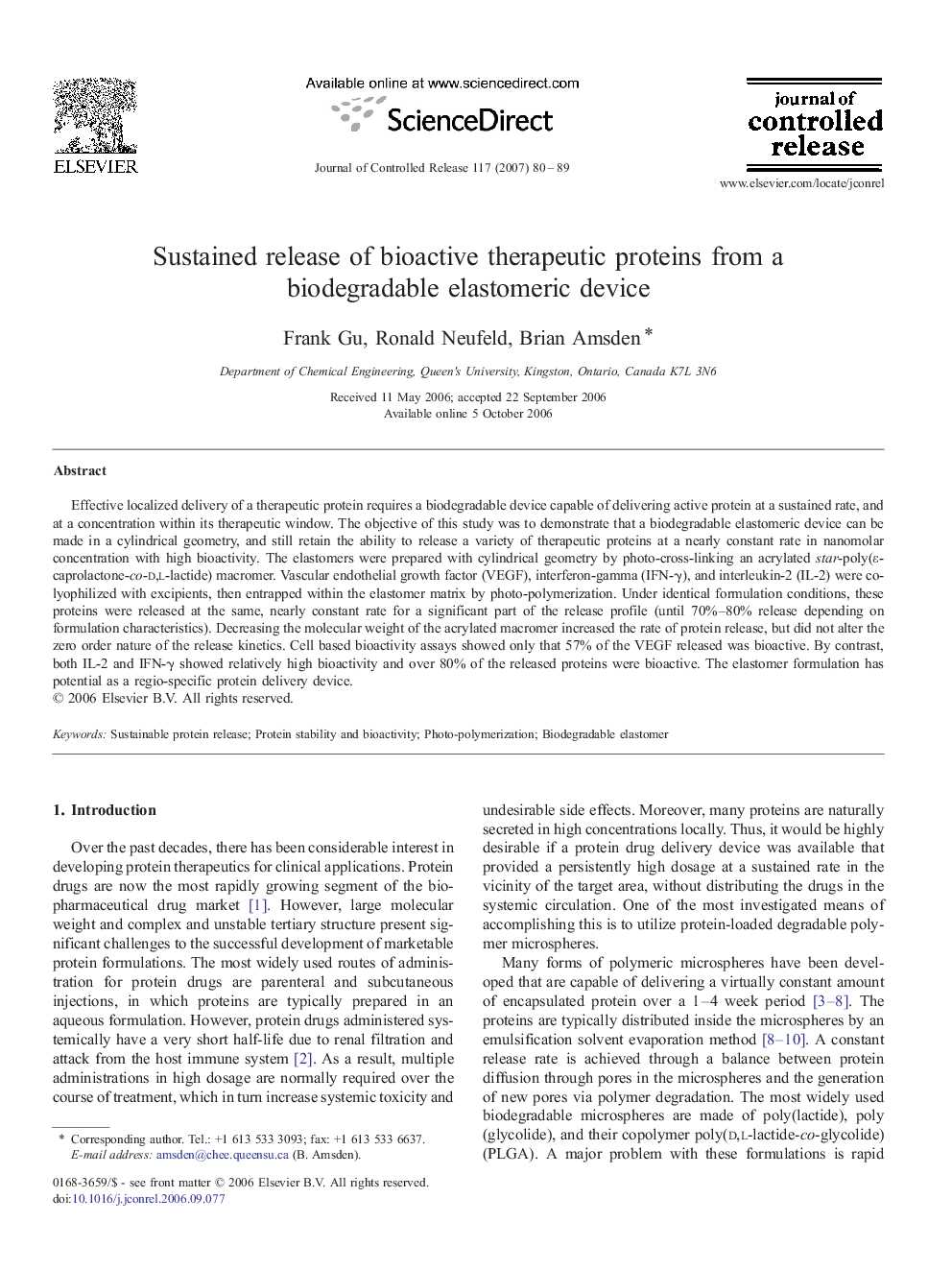| Article ID | Journal | Published Year | Pages | File Type |
|---|---|---|---|---|
| 1427291 | Journal of Controlled Release | 2007 | 10 Pages |
Abstract
Effective localized delivery of a therapeutic protein requires a biodegradable device capable of delivering active protein at a sustained rate, and at a concentration within its therapeutic window. The objective of this study was to demonstrate that a biodegradable elastomeric device can be made in a cylindrical geometry, and still retain the ability to release a variety of therapeutic proteins at a nearly constant rate in nanomolar concentration with high bioactivity. The elastomers were prepared with cylindrical geometry by photo-cross-linking an acrylated star-poly(ε-caprolactone-co-d,l-lactide) macromer. Vascular endothelial growth factor (VEGF), interferon-gamma (IFN-γ), and interleukin-2 (IL-2) were co-lyophilized with excipients, then entrapped within the elastomer matrix by photo-polymerization. Under identical formulation conditions, these proteins were released at the same, nearly constant rate for a significant part of the release profile (until 70%-80% release depending on formulation characteristics). Decreasing the molecular weight of the acrylated macromer increased the rate of protein release, but did not alter the zero order nature of the release kinetics. Cell based bioactivity assays showed only that 57% of the VEGF released was bioactive. By contrast, both IL-2 and IFN-γ showed relatively high bioactivity and over 80% of the released proteins were bioactive. The elastomer formulation has potential as a regio-specific protein delivery device.
Related Topics
Physical Sciences and Engineering
Materials Science
Biomaterials
Authors
Frank Gu, Ronald Neufeld, Brian Amsden,
